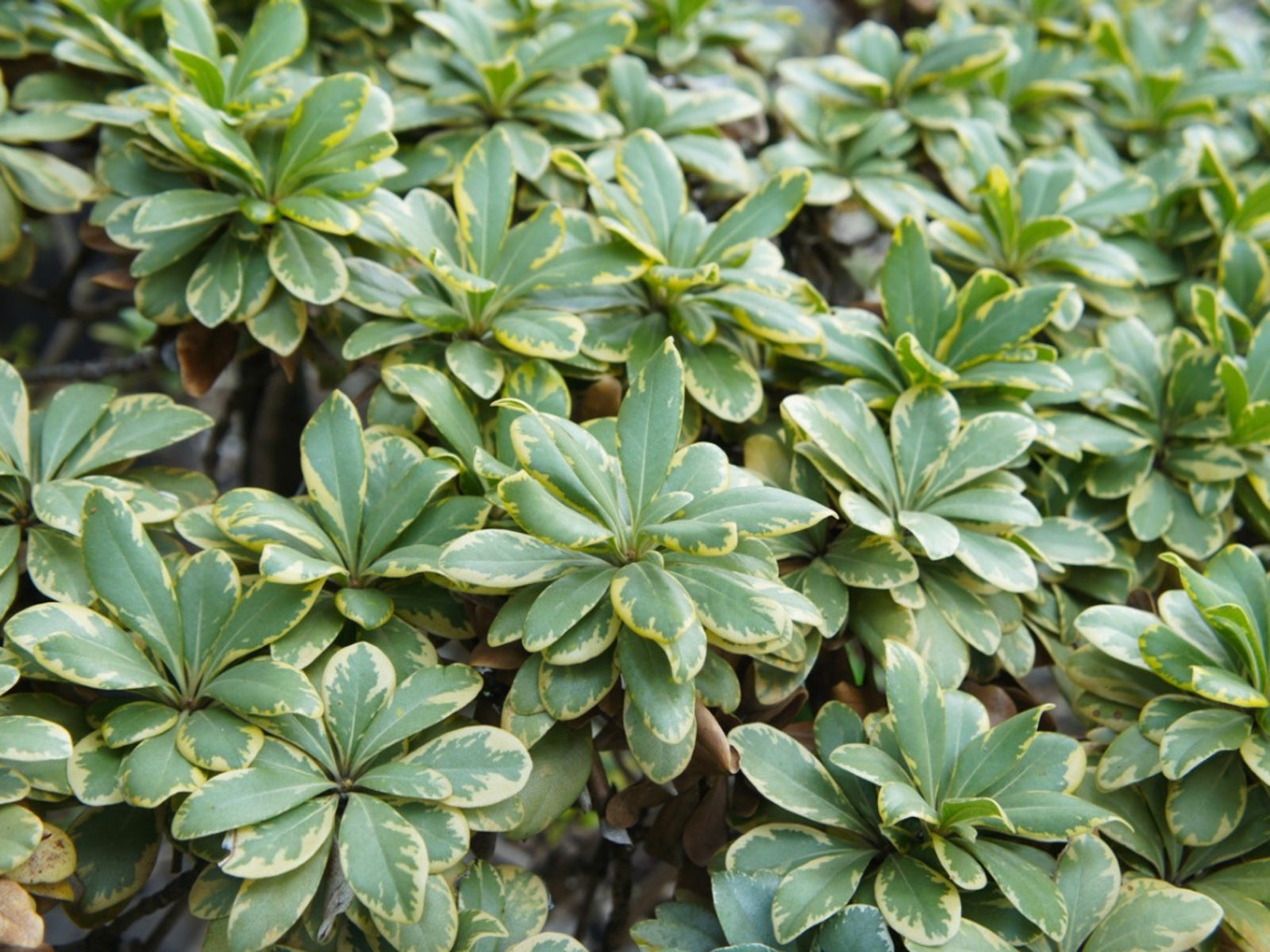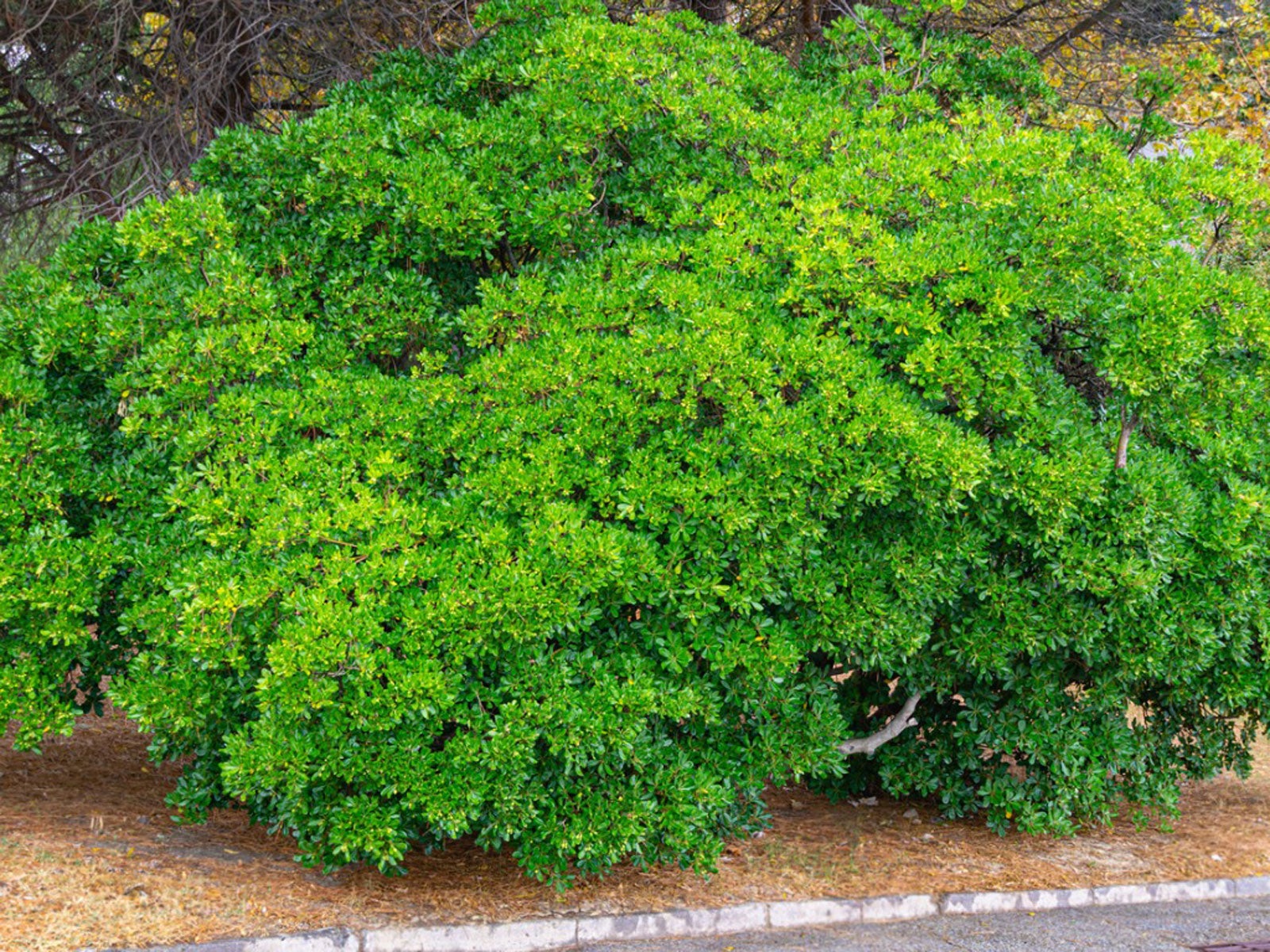Care For Pittosporum: Japanese Pittosporum Information & Growing


Japanese Pittosporum (Pittosporum tobira) is a useful ornamental plant for hedges, border plantings, as a specimen, or in containers. It has attractive leaves that enhance many other plant textures and it is very tolerant of a range of conditions. Care for Pittosporum is negligible, and the plants thrive in many locations as long as they are not grown below USDA zone 8 or above zone 11.
Pittosporum Information
Pittosporum plants are moderate to slow-growing bushes with whorled leaves of either glossy green or variegated white. The plants produce fragrant, creamy-white flowers at the ends of the stems, set in clusters. At maturity, the plants may get 12 feet (4 m.) high with an 18 foot (6 m.) spread.
The thick foliage makes the plant an excellent screen en masse, but it can also be an interesting single or multi-stemmed stand-alone tree. For coastal dwellers, an important piece of Pittosporum information is the plant's excellent salt tolerance.
How to Grow Pittosporum
This is a very versatile plant and thrives equally well in either shade or sun. Propagation, or how to grow Pittosporum, is through semi-hardwood cuttings in summer. Place the cutting in a half and half mixture of peat and perlite. Keep the pot lightly moist and soon you will have another Pittosporum baby to enjoy. The plant does produce small fruits with bright red seeds, but the seeds are not easily sprouted and are often not viable.
Japanese Pittosporum Care
The tolerance of this plant is nearly legendary. In addition to its ambivalence regarding lighting, it can also grow on almost any soil. It is drought-resistant, but the plant is most beautiful when it does receive regular irrigation. Use mulch around the root zone in hot areas, and plant in an eastern exposure at the highest hardiness zones to prevent sunscald.
The most important aspect of good Japanese Pittosporum care is to ensure the planting site has adequate drainage. While the plant grows best when it has regular water, it doesn't tolerate wet feet and is also susceptible to a host of fungal diseases. Water at the root zone to prevent foliar disease and fertilize in spring with an all-purpose, slow-release plant food.
Trimming Pittosporums
Pittosporum plants are very tolerant of pruning. Trimming Pittosporums helps shape them and keep them within a desirable size. They may be headed back for sizing or even severely cut back for rejuvenation.
Gardening tips, videos, info and more delivered right to your inbox!
Sign up for the Gardening Know How newsletter today and receive a free copy of our e-book "How to Grow Delicious Tomatoes".
As a hedge, you won't get a smooth appearance because you need to cut under the whorled leaves and they are staggered. However, pruning below the terminal leaf arrangement produces a natural, soft-looking hedge. Annual pruning as part of the care of Pittosporum may reduce the scented flowers. To encourage blooms, prune right after flowering. Remove the lower branches if you wish to have a small tree appearance.
You can keep the plant in a small size for many years by consistently trimming Pittosporums. However, a better approach if you want a smaller plant is to purchase 'MoJo' a small plant that gets only 22 inches (56 cm.) high, or a dwarf variety like 'Wheeler's Dwarf'.

Bonnie Grant is a professional landscaper with a Certification in Urban Gardening. She has been gardening and writing for 15 years. A former professional chef, she has a passion for edible landscaping.
-
 Looking For Plants To Give You The Soft And Fuzzies? Try These 5 Fuzzy Leaf Plant Options
Looking For Plants To Give You The Soft And Fuzzies? Try These 5 Fuzzy Leaf Plant OptionsLovers of texture, drama, silver foliage and tactile plants will adore these special sensory garden additions. These fuzzy leaf plant options will leave you all aglow
By Susan Albert
-
 Get Ready For A Summer Of Hummers! Grow These Full Sun Hummingbird Plants and Flowers
Get Ready For A Summer Of Hummers! Grow These Full Sun Hummingbird Plants and FlowersIf you’re lucky enough to enjoy a sunny backyard, make sure you are maxing out on your pollinator opportunities and grow these full sun hummingbird plants and flowers
By Tonya Barnett
